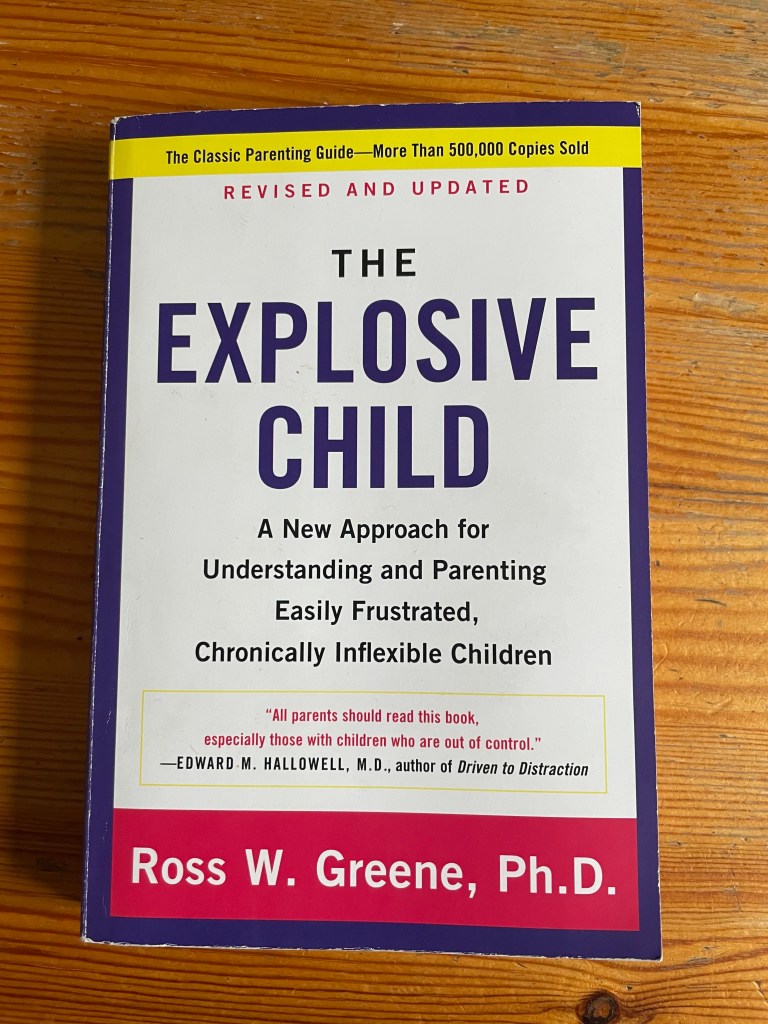
I was first recommended this book by Kate Iwi in 2018, and reminded of it again reading the recent paper from Nikki Rutter.
Greene offers a new way of thinking about “behaviourally challenging children”, and about their parents, which prompts a different response to their behaviour from the adults around them. While he uses the term ‘Explosive’ in the title, he admits to being a little unhappy with it as he finds the challenging behaviour to be often predictable, and also often ‘implosive’. Nevertheless, it will chime with many families, who will recognise the behaviours described within its pages. Greene lays out ‘Plan B’ in easily digestible steps as a way forward in the journey to restoring peace and safety in the home. With many examples both of the behaviour, and scripts to follow, this is a book that you could comfortably read in a couple of sessions – but don’t! With resources to download and homework to do you will be referring to this over a longer period of time.
The Plan B proposition flies in the face of much advice that is readily handed out – but then that advice hasn’t cut it for these children, and Greene suggests reasons why ‘trying even harder’ just won’t work and may make things worse. But we do get fixed in normative ways of thinking and so it may be difficult at first to accept a new way and to change old habits. This requires the adults to change what they do too, another stumbling point with parents who may feel they are being blamed just through this suggestion. But if the old way hasn’t worked, what’s the harm? And ultimately we can only change what WE do, hopefully then changing the way others respond. Greene is an advocate for using Plan B with all children – not just a kinder way of parenting, but a more respectful and ultimately effective way.
The book also feeds into the continuing debate about how we refer to this behaviour. Which itself will be determined by how we conceptualise what is going on. Rutter has long argued that we should move away from words such as violence and abuse, particularly when talking about younger children and those who are neurodivergent, towards terms such as ‘explosive’ or ‘harmful’. In her paper, she offers a persuasive argument for developing an umbrella term for the purposes of policy development, while accepting numerous subsets of harmful behaviour towards parent figures dependent on background circumstances, the intent and outcome of the harmful behaviour:
As to what is the most appropriate umbrella term to attempt to capture all forms of harm to a parent-figure instigated by their pre-adolescent, adolescent, or adult child continues to be debated. However, such expansive terminology loses the nuance, source, and purpose of these harms. Umbrella terminology is useful at the political and policy-based level; it can create pathways to funding and information, but exploring explosive and harmful impulses as a subset of these harms also provide opportunity to work with families using the language they helped develop, that speaks to them and their experiences.
This is a familiar position and one that certainly makes sense when there are so many possible pathways, individual and family characteristics, social and political situations. Yet we also need to acknowledge that children (and families) can straddle more than one subset. Things are not clear cut! Back to my Venn diagram I think.


